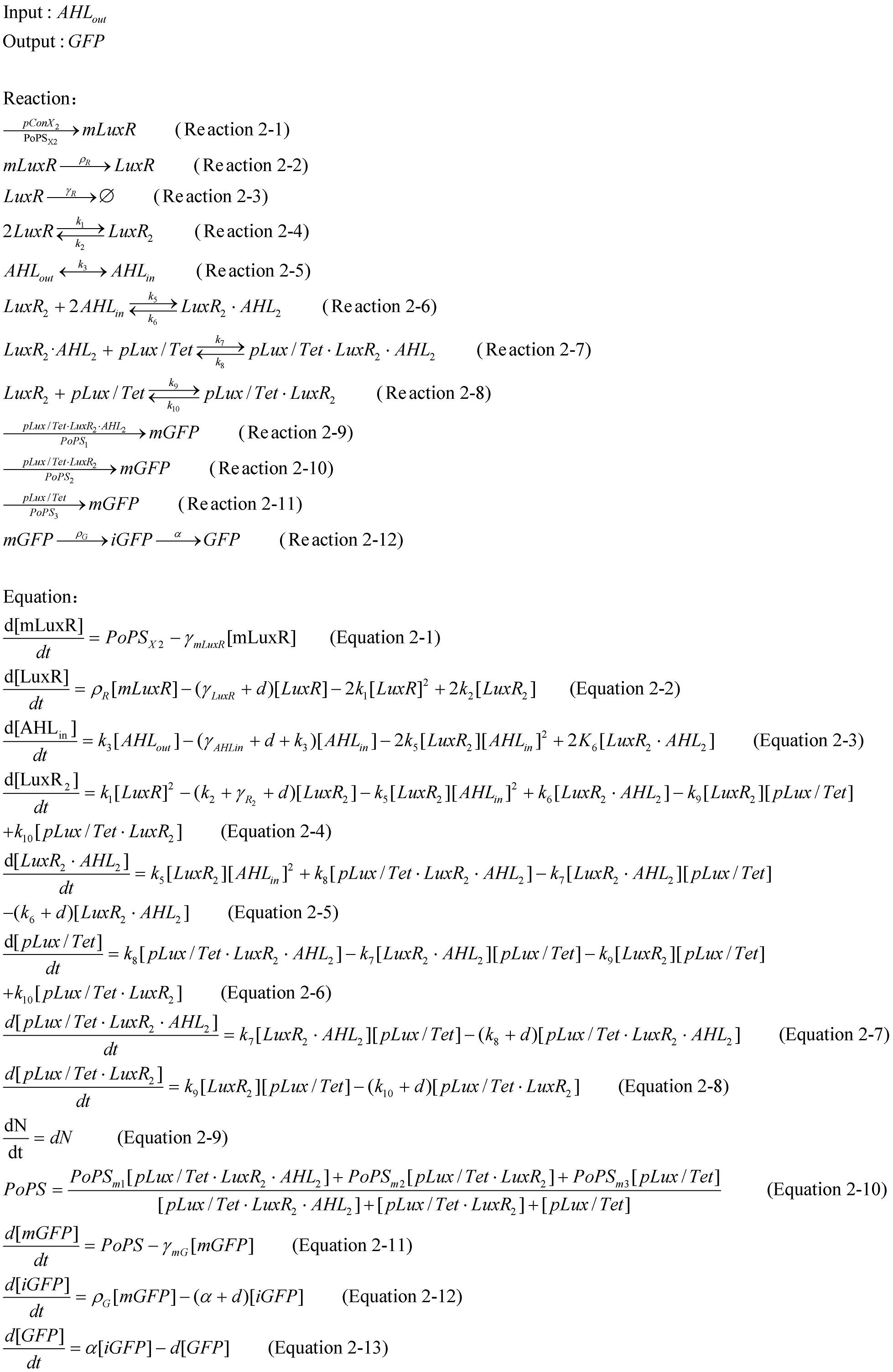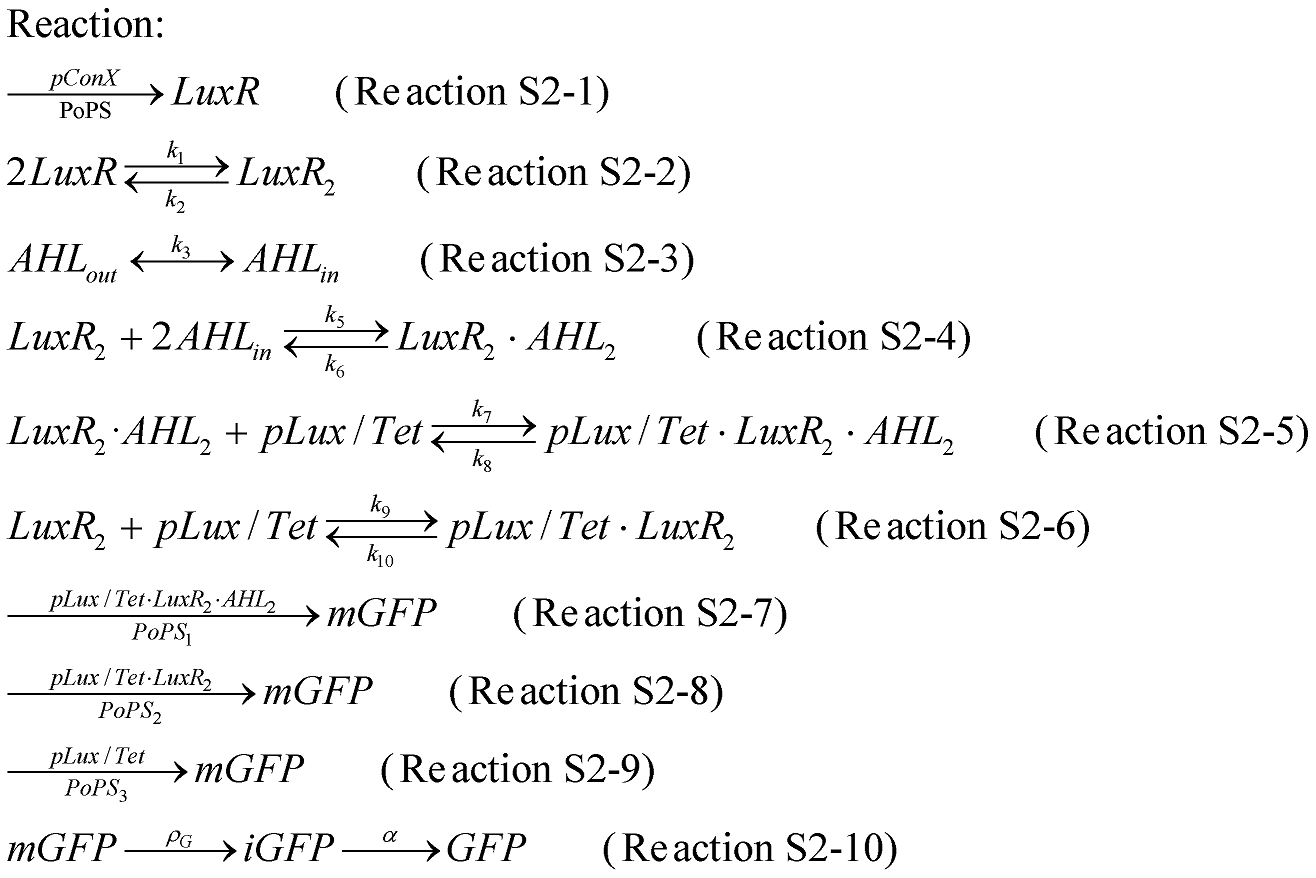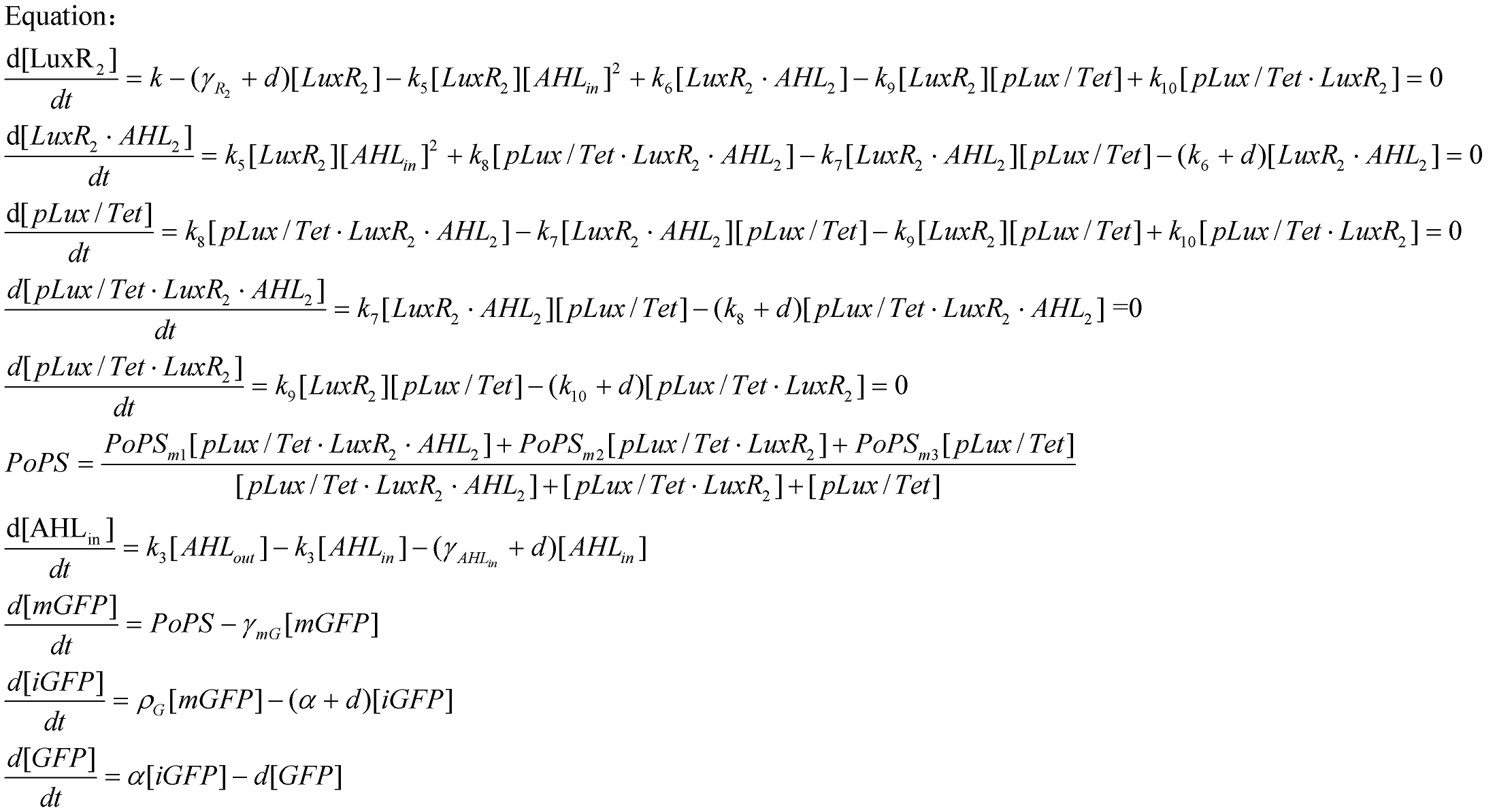Team:USTC/Modeling/Model-2
From 2009.igem.org
(Difference between revisions)
| Line 10: | Line 10: | ||
We employed an ODE model. We defined the input to be AHL<sub>out</sub> the and the output to be the synthesis rate of mature GFP. | We employed an ODE model. We defined the input to be AHL<sub>out</sub> the and the output to be the synthesis rate of mature GFP. | ||
| - | [[Image:s-m-2-1.jpg| | + | [[Image:s-m-2-1.jpg|550px]] |
To simplify the model, the (Recation S2-4), (Recation S2-5) and (Recation S2-4) were considered to be able to get balance in a very shortly time. | To simplify the model, the (Recation S2-4), (Recation S2-5) and (Recation S2-4) were considered to be able to get balance in a very shortly time. | ||
Revision as of 07:36, 21 October 2009
| Home | Team | Project | Modeling | Parts | Standard & Protocol | Software Tool | Human Practice | Notebook |
|---|
Team:USTC/Modeling/Model-2
Contents |
pConX2+LuxR+pLux/Tet+GFP
Parts: K176026 K176126 K176128 K176130
Simplified Model-2
We employed an ODE model. We defined the input to be AHLout the and the output to be the synthesis rate of mature GFP.
To simplify the model, the (Recation S2-4), (Recation S2-5) and (Recation S2-4) were considered to be able to get balance in a very shortly time.
The values of 4.8E-3 for rmG, 4.8E-3 for a and 0.4 for pG were got from the F2620, and the value for d of 0.00368 based on the measurement of the OD.
 "
"



